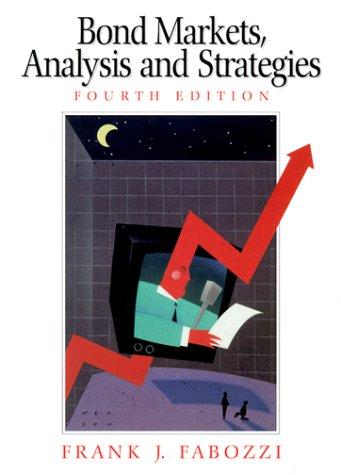Question
PLEASE SHOW WORK!!! Question #6: Suppose a homeowner has an existing mortgage loan with these terms: Remaining balance of $150,000, interest rate of 8 percent,
PLEASE SHOW WORK!!!
Question #6: Suppose a homeowner has an existing mortgage loan with these terms: Remaining balance of $150,000, interest rate of 8 percent, and remaining term of 10 years (monthly payments). This loan can be replaced by a loan at an interest rate of 6 percent, at a cost of 8 percent of the outstanding loan amount. Should the owner refinance? What difference would it make if the homeowner expects to be in the home for only 5 more years rather than 10?
Question #8: Eight years ago you borrowed $200,000 to finance the purchase of a $240,000 home. The interest rate on the old mortgage loan is 6 percent. Payments are being made monthly to amortize the loan over 30 years. You have found another lender who will refinance the current outstanding loan balance at 4 percent with monthly payments over 30 years. The new lender will charge two discount points on the loan. Other refinancing costs will equal $6,000. There are no prepayment penalties associated with either loan. You feel the appropriate opportunity cost to apply to this refinancing decision is 4 percent.
a) What is the payment on the old loan?
b) What is the current loan balance on the old loan (five years after origination)?
c) What would be the monthly payment on the new loan?
d) Should you refinance today if the new loan is expected to be outstanding for 5 years?
Question #9: You are offered 2 choices for financing your house, valued at $200,000, as follows:
a) A 90 percent LTV fixed-rate 30-year mortgage at 6 percent. It will require private mortgage insurance for 9 years (until the loan is reduced to 78 percent of value), effectively increasing the payment as if the loan were a 6.75 percent loan for 9 years.
b) An 80 percent LTV first mortgage, fixed rate, 30 years at 6 percent (no mortgage insurance is required because the loan is 80 percent of value). A "piggyback" second mortgage for 10 percent of value of the house, with an effective borrowing cost of 8 percent, and a maturity (term) of nine years.
You expect for the financing to be in place for seven years. If there is no difference in the upfront cost of the two arrangements, which would be the better choice financially? Why?
Step by Step Solution
There are 3 Steps involved in it
Step: 1
The question contains detailed financial scenarios concerning refinancing decisions related to mortgages Lets approach each part step by step focusing ...
Get Instant Access to Expert-Tailored Solutions
See step-by-step solutions with expert insights and AI powered tools for academic success
Step: 2

Step: 3

Ace Your Homework with AI
Get the answers you need in no time with our AI-driven, step-by-step assistance
Get Started


